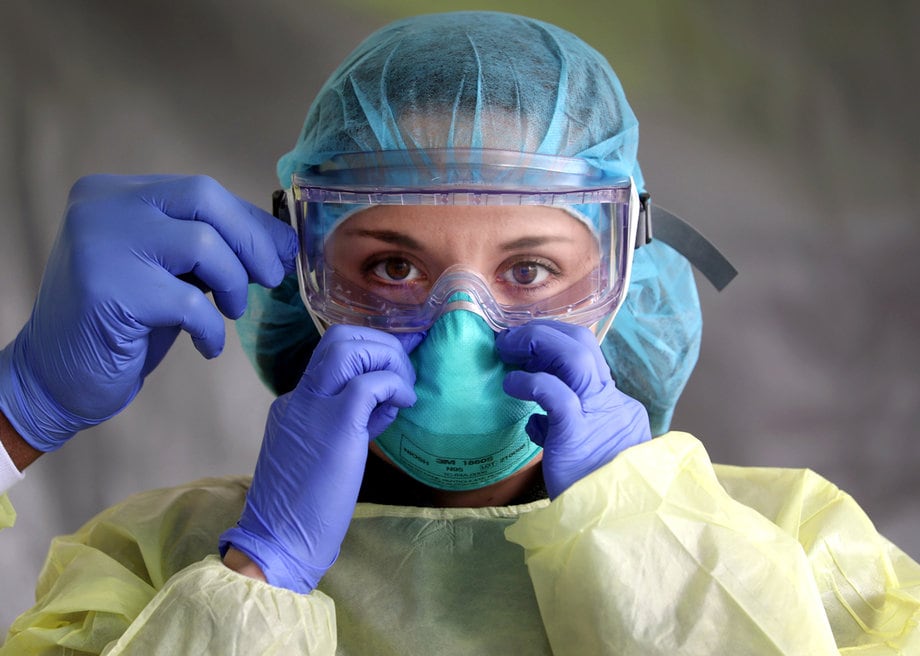How to Safely Care for Someone Infected With a Virus

This article aims to provide a comprehensive guide on the safe and effective care of individuals infected with a virus. By understanding the nature of the virus and its modes of transmission, caregivers can establish a secure and isolated environment that minimizes the risk of further contamination.
Proper hygiene practices, both for caregivers and the infected individuals, are crucial in preventing the spread of the virus.
Additionally, emotional support and encouragement play a significant role in facilitating the recovery process.
Finally, monitoring and promptly reporting any emerging symptoms are essential for effective management and containment.
Key Takeaways
- Understanding virus transmission routes and prevention measures is crucial for safe care.
- Creating a safe and isolated environment by separating infected and non-infected individuals and regularly disinfecting surfaces and objects.
- Caregivers should practice proper hygiene, including regular handwashing and disinfecting frequently-touched surfaces.
- Providing emotional support and encouragement, maintaining communication, and creating a safe environment are important for the well-being of both caregivers and infected individuals.
Understanding the Virus and Its Transmission
Understanding the virus and its modes of transmission is crucial in implementing effective strategies for safely caring for someone infected.
Virus transmission refers to the process by which a virus is transmitted from one person to another. It can occur through various routes, including respiratory droplets, direct contact with infected individuals, and contaminated surfaces.
To prevent the transmission of the virus, several prevention measures should be followed. These measures include practicing good hand hygiene by washing hands frequently with soap and water or using hand sanitizers, wearing masks to prevent respiratory droplet transmission, maintaining social distancing to minimize direct contact with infected individuals, and regularly disinfecting surfaces.
Understanding the virus transmission and adhering to prevention measures are vital in ensuring the safety of both the caregiver and the infected individual.
Creating a Safe and Isolated Environment
To establish a secure and isolated environment, it is crucial to implement measures that minimize the risk of transmission and provide necessary support for individuals affected by the viral infection.
Isolation precautions play a key role in preventing the spread of the virus. These precautions involve separating infected individuals from those who are not infected, using dedicated rooms or designated areas for isolation.
Additionally, strict adherence to disinfection procedures is essential to maintain a safe environment. Disinfection of surfaces and objects that may be contaminated with the virus should be carried out regularly using appropriate disinfectants. This helps to eliminate any potential sources of infection and reduce the risk of transmission.
Proper Hygiene Practices for Caregivers
Proper hygiene practices for caregivers involve regular handwashing with soap and water for at least 20 seconds, or using hand sanitizers with at least 60% alcohol content, to minimize the risk of transmitting pathogens. Hand washing is a crucial component of infection control, as hands are a common mode of transmission for many diseases.
Caregivers should also ensure that frequently-touched surfaces are regularly disinfected. Disinfecting surfaces helps to eliminate pathogens that may be present, reducing the risk of infection. It is important to use disinfectants that are effective against the specific pathogens of concern.
Following these hygiene practices can help caregivers protect themselves and those they care for from the transmission of diseases.
Providing Emotional Support and Encouragement
Emotional support and encouragement can play a vital role in promoting the well-being of individuals in need of care. When caring for someone infected with a virus, it is important to provide comfort and reassurance.
This can be achieved through active listening, empathy, and validation of their feelings. Maintaining communication is also crucial, as it allows for the expression of emotions and concerns. Regular check-ins and open-ended questions can provide opportunities for individuals to share their experiences and seek guidance or support.
Additionally, caregivers should create a safe and non-judgmental environment, where individuals feel comfortable expressing themselves. This can be achieved by demonstrating empathy, patience, and understanding.
Monitoring and Reporting Symptoms
Monitoring and reporting symptoms is a crucial aspect of providing effective care for individuals affected by a viral infection. This allows for the tracking of progress and helps in determining the appropriate course of action.
It is important to seek medical advice if any new or worsening symptoms arise, as this can indicate a change in the individual’s condition. By reporting symptoms promptly, healthcare professionals can evaluate the severity of the infection and make informed decisions regarding treatment.
Regular monitoring also enables the identification of potential complications or side effects of medication, ensuring timely intervention. Moreover, tracking symptoms over time can provide insight into the effectiveness of the chosen treatment plan and guide adjustments if necessary.
Overall, the diligent monitoring and reporting of symptoms play a vital role in ensuring optimal care for individuals infected with a virus.
Frequently Asked Questions
How Long Does It Typically Take for Someone Infected With a Virus to Recover?
The recovery timeline for individuals infected with a virus varies and depends on several factors. Common complications during the recovery process may prolong the overall duration of the illness.
Are There Any Specific Dietary Recommendations for Someone Infected With a Virus?
Dietary considerations and nutrition support are important for individuals infected with a virus. Specific dietary recommendations may vary depending on the type of virus and individual needs, and should be tailored by healthcare professionals to optimize recovery and immune function.
Can a Caregiver Contract the Virus From the Person They Are Caring For?
Caregiver safety is a crucial concern when caring for someone infected with a virus. Understanding transmission risks is essential in minimizing the potential for the caregiver to contract the virus from the person they are caring for.
Should Caregivers Wear Personal Protective Equipment (Ppe) at All Times?
The use of personal protective equipment (PPE) by caregivers has both advantages and disadvantages. It is important for caregivers to receive proper training on the correct use of PPE to ensure their safety and the safety of the person they are caring for.
Are There Any Alternative Treatments or Remedies That Can Help in the Recovery Process?
Alternative therapies and natural remedies are sometimes explored as potential adjuncts to conventional medical treatments. However, their effectiveness in the recovery process of virus-infected individuals remains unclear and requires further scientific investigation.









